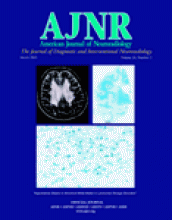Article Information
PubMed
Published By
Print ISSN
Online ISSN
History
- Received May 30, 2004
- Accepted after revision July 6, 2004
- Published online March 9, 2005.
Copyright & Usage
Copyright © American Society of Neuroradiology
Author Information
- aNational Institute of Neurological Disorders and Stroke, National Institutes of Health, Bethesda, MD
- bDepartment of Neurology, University of Heidelberg, Heidelberg, Germany
- cDepartment of Neurology, University of Ulsan, Asan Medical Center, Seoul, South Korea
- Address correspondence to Peter D. Schellinger, MD, PhD, Department of Neurology, Im Neuenheimer Feld 400, Kopfklinik, D-69120 Heidelberg, Germany











